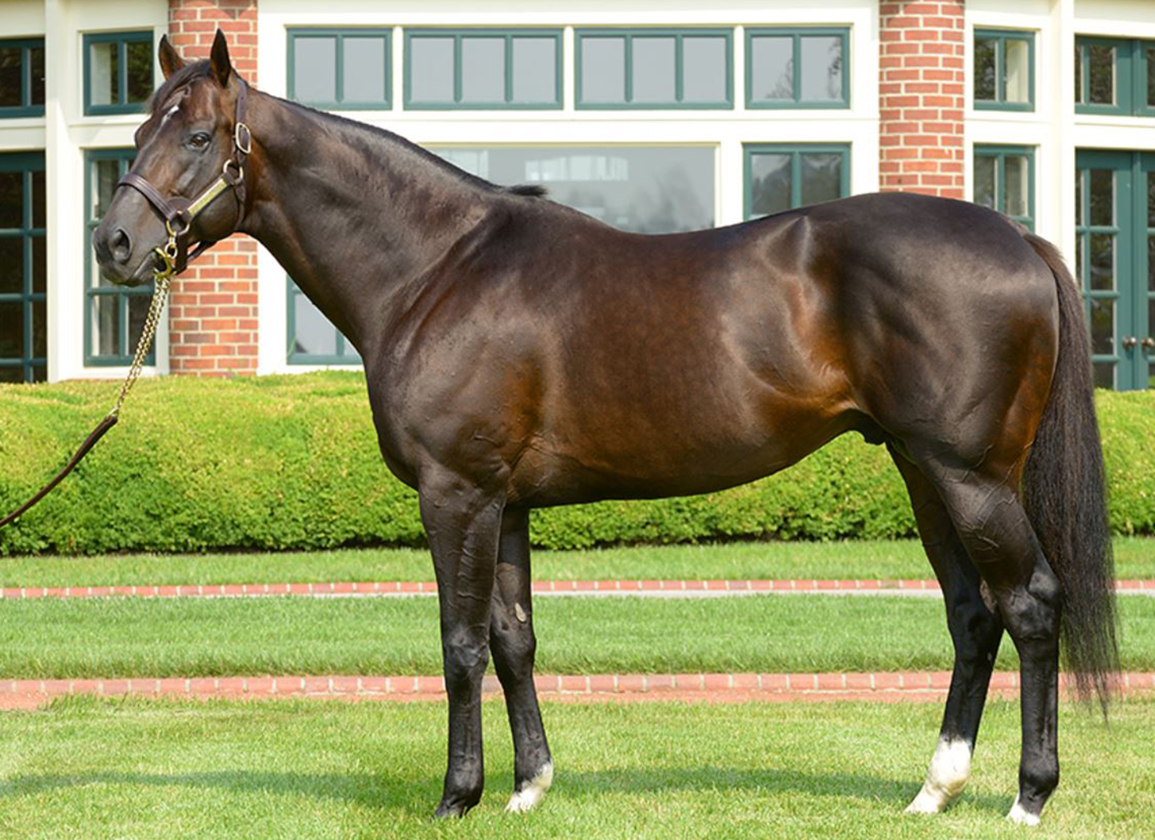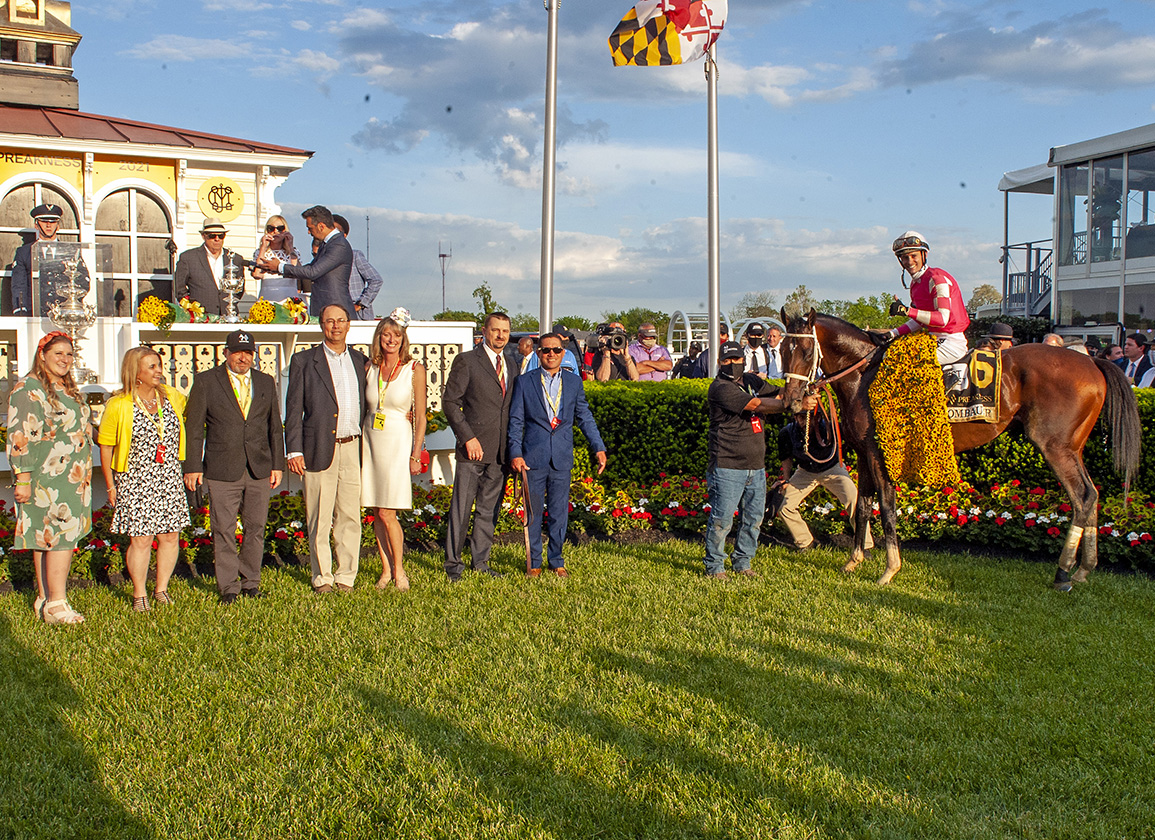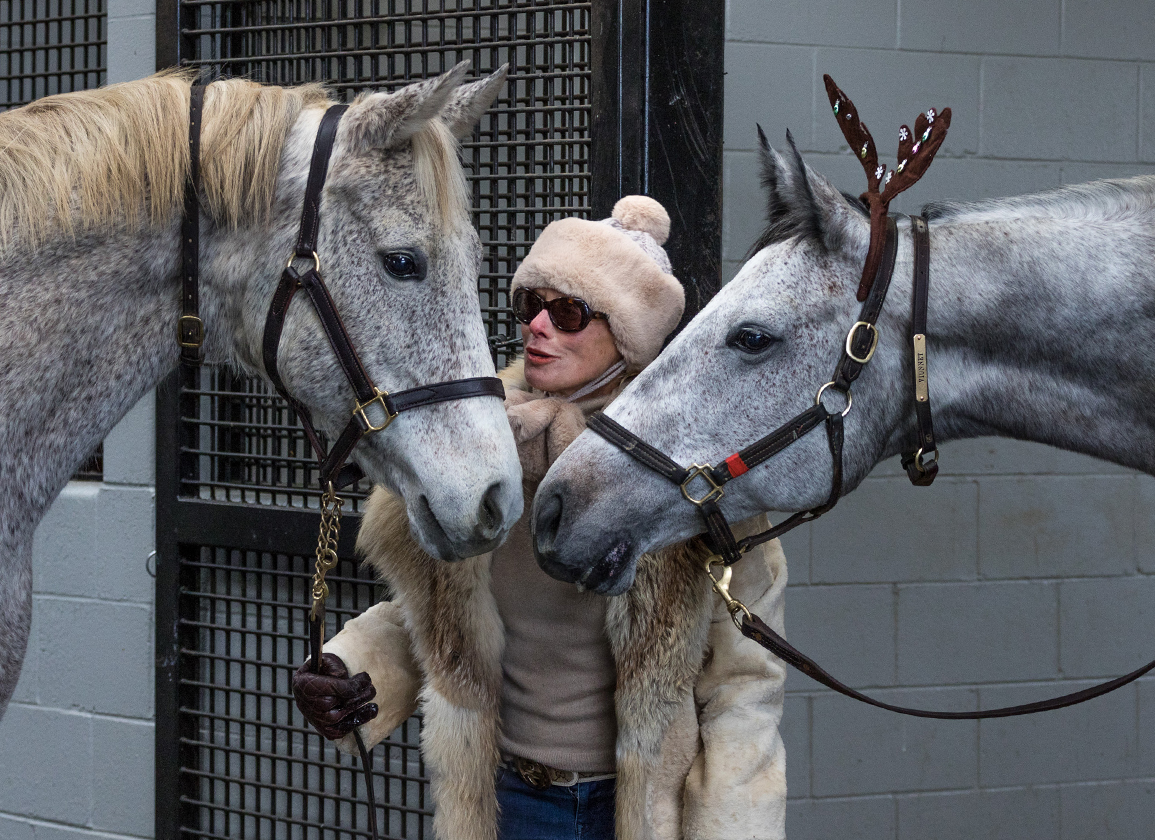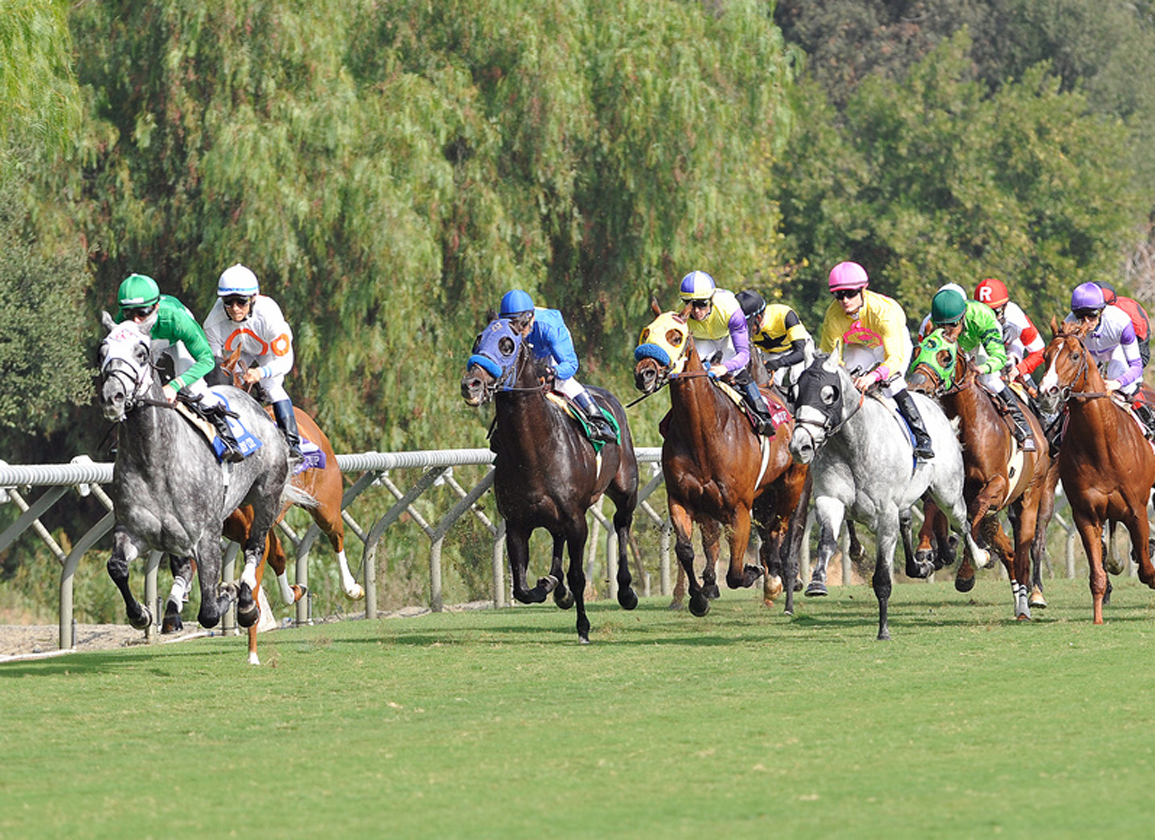What are the chances? Well, actually, it's easy enough to do the math. There were 21,181 Thoroughbred foals in the North American crop of 2018. Of these, Woodstock Farm took in its usual dozen or so colts. And, of these, two will line up next Saturday among the favorites for the final leg of the Triple Crown.
“I'm sure it's happened before,” says the farm's owner Ben Berger. “At Gainesway and Claiborne, Taylor Made and Lane's End, Darby Dan, all these farms. I'm sure they've had some really good horses come out of the same field. Stone Farm is supposed to have a magic field. But we probably have between 10 to 15 colts a year, and for two of them to end up in this race, one having placed in the [GI Kentucky] Derby and the other won the [GI] Preakness [S.], for a farm of our size it's awfully satisfying.”
None of us, even the most sensitive and devoted of their custodians, can get into the heads of these animals sufficiently to know whether some frisson of recognition might be renewed when Hot Rod Charlie (Oxbow) and Rombauer (Twirling Candy) stroll into the parade ring before the GI Belmont S. All we can do is marvel that the whole crop, conceived and foaled and raised for no greater purpose, should include among the elite sieved into the Classics these two former paddock buddies from a small Bluegrass nursery.
Rombauer was actually foaled and weaned at Machmer Hall but transferred to Woodstock, a 190-acre farm on the Old Frankfort Pike, by breeders John and Diane Fradkin after that operation went private; while Hot Rod Charlie was sent here after being astutely picked out by Bob and Sean Feld as a $17,000 short yearling.
Aside from coinciding in their trackwork over the coming mornings, the Belmont won't be actually the first time the two colts have met since Hot Rod Charlie went back down the road to Fasig-Tipton following an eight-month sojourn with Berger. Both lined up for the GI Breeders' Cup Juvenile a year later, finishing third and fifth respectively, but they have performed still better in the Classics. Hot Rod Charlie ran third in the Kentucky Derby; while Rombauer, having sat out that race, pounced as a fresh horse to win the Preakness. It now feels as though a couple of star pupils from the same provincial high school have ended up as opposing attorneys at the Supreme Court.
“They would have been in the same field, from February on,” Berger recalls. “We buddied them up because one was going to the racetrack and the other was going to October and didn't need to start at the same time as the September horses. So they'd have gone together from a large, 15- or 20-acre field down to a couple acre paddock.”
Hot Rod Charlie, of course, had soon been redeemed from virtual anonymity at the Fasig-Tipton February Sale by the blossoming of his half-brother Mitole (Eskendereya) into champion sprinter. As such, he was still very well bought at the Fasig-Tipton October Sale by Dennis O'Neill for $110,000. In the meantime, he had already shown a tendency to draw attention to himself.
“He was one of those that want to do things at his speed, as opposed to what we wanted him to do,” Berger recalls. “He was a nice, good-bodied horse, always very forward. But he was a high energy kind of colt, and wanted to do things his way. We could hardly ever get him just to let down and walk. He constantly wanted to jog on the shank. He wanted to be first in, and first out, and if he wasn't he got a little bit excitable. In sales prep it all came together a bit, we were taking more effort out of him every day, and he settled and showed himself nicely.”
Rombauer, in contrast, was a model pupil who obligingly followed a different program before heading down to Eddie Woods in Ocala.
“He was a more laidback horse,” Berger recalls. “Very straightforward, very easy to deal with. Maybe because he was that way, that's why they got along like they did. When Hot Rod Charlie went into prep, Rombauer kind of stayed with him. They stayed paddocked next to each other, once we separated them, and he was on the same routine.”
When you consider that Woodstock did something pretty similar at Keeneland's first Breeders' Cup, then they must be doing something right. In 2016, they could claim a share of the credit for both first and third in the GI Juvenile Fillies' Turf: winner Catch a Glimpse (City Zip) was bred by Branch Equine, then operated by Berger's late father Robert; while the third Nemoralia (More Than Ready) had been pinhooked by Berger with David Egan.
For good measure, that crop also included Suddenbreakingnews (Mineshaft), bred by Branch Equine and fifth in the Derby after winning the GIII Southwest S. He was duly fancied for the Belmont, but disappointed, so Berger knows not to get ahead of himself this time round. But then that's something that becomes second nature when you deal with young Thoroughbreds, whose only reliability is their capacity to surprise.
“There's some that you think will do well that go out and don't do a thing, and others you think are just nice horses, they go and surprise you and are really good horses,” Berger says. “Suddenbreakingnews was a nice, straightforward horse, but I never thought he would end up in a photo for third in the Derby. Catch a Glimpse was a nice filly, but we let her go for $75,000 because that's what we thought she was worth. But, while I can't look at a horse that I've raised and say, 'This is going to be a Grade I horse,' I think you can say, 'This horse has got a chance.' A better chance than others. But so many things after they leave us have to happen right.”
It's precisely because you can't ever be certain that you must give them all the same opportunity: if you believe in your regime, your system, then they will have a platform whatever their potential. For Berger, less is more: the less he interferes, the more Nature can draw on her own resources. And the relatively intimate scale of Woodstock enables him to back off without ever losing sight of the nuances.
“I think I tend to be a little bit less intensive, in terms of micromanaging their day,” he explains. “I bring them in, feed them, exercise them, groom them, turn them back out, and just try not to get in their way too much. I think horses are better in their natural element. I don't like to overthink it, don't want to reinvent the wheel. Keep them outside as long as you can. Take care of issues as they come up, and then get them back out there. Just let them be horses as much as possible, and become the best they can be. I can't make a horse be what it's not.”
Obviously, sales preparation entails a little more discipline, with dates pretty well carved in stone, but Berger retains due flexibility for the likes of Hot Rod Charlie.
“He couldn't just do the same thing every day, like some of them,” he explains. “We couldn't lunge him or put him on the walker every day. We had to take our time: exercise him harder for periods, and then when he started getting a little over the top, back up and hand walk for a while. I think sometimes we're able to do things like that, because we have less numbers. It's always easier if you try to work with a horse's personality and quirks rather than against them.”
Berger lost his father a couple of years ago but he had been present when Catch a Glimpse won at the Breeders' Cup.
“He bought her mother Halo River [Irish River {Fr}] as a weanling and raced her,” Berger says. “She won the Appalachian before it was graded, but probably the best race he ever won. And he was there the day Catch a Glimpse broke her dam's track record in the same race. That was the year my mother passed, and I think Catch a Glimpse helped a lot, she was a special horse to all of us.”
Berger Sr. had a long and colorful career before entering the Turf. He had grown up on a coal camp in Harlan County, Ky., but went away to Duke University where he played linebacker and defensive guard for the Blue Devils under Wallace Wade. He served in the Air Force as first lieutenant before returning to Duke for law school, and practiced for 20 years before buying an explosives plant to supply mining clients.
“All along, he loved animals,” Berger recalls. “He bred dogs at one point, imported a field trial dog from England or Ireland, and with horses he started with Morgans. He had some success showing, but soon found out that Morgan horse babies don't bring near as much as Thoroughbred babies do, so he kind of transitioned that way.”
Berger Sr. cut his teeth with syndicates, with Centennial Farms and Dogwood, and struck gold with a stake in 1990 Preakness winner Summer Squall (Storm Bird) before initiating his own program.
“My father always had fairly strong ideas, and liked to be able to test them without having to answer to someone else,” Berger says. “If it succeeded, great. If it didn't, then he would learn from it and do it different next time. So, he started buying mares and breeding some on his own. And then after about 15 or 20 years [in 1997] my mother bought the farm and he brought his horses there.”
Berger himself graduated from Amherst College, Ma., and spent a year in Manhattan as a paralegal. But his heart wasn't in city life and when he went up to Saratoga to see his father sell a Storm Bird filly, her disappointing price didn't prevent a game-changing weekend. Berger was introduced to the Taylor brothers, who were looking after some of his father's mares at the time (along with Mill Ridge and Darby Dan) and were suitably polite when he mentioned the idea of getting some experience on their farm someday. A couple of weeks later he showed up at the farm office.
One of the Taylor boys got onto the phone to Berger Sr.
“Your son's here. We kind of told him he could have a job. He wants to learn about horses. What do you think?”
“Well,” came the reply. “If he wants to learn about horses, put him where you think he's going to learn about horses.”
“So, they stuck me in a barn with 26 foaling mares,” recalls Berger. “He didn't ask them to coddle me or to treat me any differently than anybody else. I think he would probably have been happier if I'd gone to law school. But after a couple of years, I just found that I liked what I was doing, and thought I could make a living doing it.”
Even when the family acquired a farm, and Berger was given the chance to transfer the skills he had honed with stints in South Carolina and New York, besides one at Mill Ridge, he was left no doubt that he would have to earn his stripes. The manager Tom Wright was retained, and became something of a mentor. Berger spent a winter as nightwatchman, he mucked out, he did the accounts. On Wright's death, however, he was given his chance.
“Of course I made mistakes along the way, but we kept at it together,” Berger says. “I think in the end my father was fine about me working with the horses, it just wasn't something he had expected or pointed me towards. If anything, he may have tried to steer me away–but I was a little too hard-headed to listen.”
And thank goodness for that. Berger is meeting the exemplary standards to which he was raised and, while determinedly modest, can surely take pride in the niche he has created for Woodstock.
“My father liked to do a lot of different things, and liked to make his own way,” he says. “In almost everything he set out to do, he typically got pretty doggone close to what he wanted. He never tried to be real hands-on, raising foals, and didn't want to race an awful lot. What he really enjoyed was studying pedigrees and putting matings together. And whether they sold well or not, he enjoyed seeing those horses run well for other people as much as anything.
“The horses gave him great pleasure. And so did his children and grandchildren. He was a huge supporter of Duke football, and basketball, which didn't necessarily make him the most liked person in Lexington! He was a lucky guy. He lived his life the way he chose, and made it work out for himself. We were lucky to have him as a father, and as a boss. Wasn't always the easiest guy to work for, but I learned a lot of things from him that I probably don't want to admit now.”
Now Berger is likewise improvising his own path. He has just four mares of his own, and pinhooks four or five weanlings.
“We're a small farm, and I've been lucky to have good people here the whole time,” he says. “These two horses, I think we just tried to stay out of their way, and let them became what they could. Machmer Hall foaled and raised Rombauer, and we've had luck before with them. We all know each other, all work with each other. Every year there's a lot of really nice horses that go through sales, a lot that don't go through sales. But out of a 20,000-plus foal crop, for two to be in the same field and end up in the same Classic race two years down the line, well, we'd sure like to see them run one-two. This is a big business, but it's a small world.”
The post Berger Shepherds Duo Into the Belmont Fold appeared first on TDN | Thoroughbred Daily News | Horse Racing News, Results and Video | Thoroughbred Breeding and Auctions.




